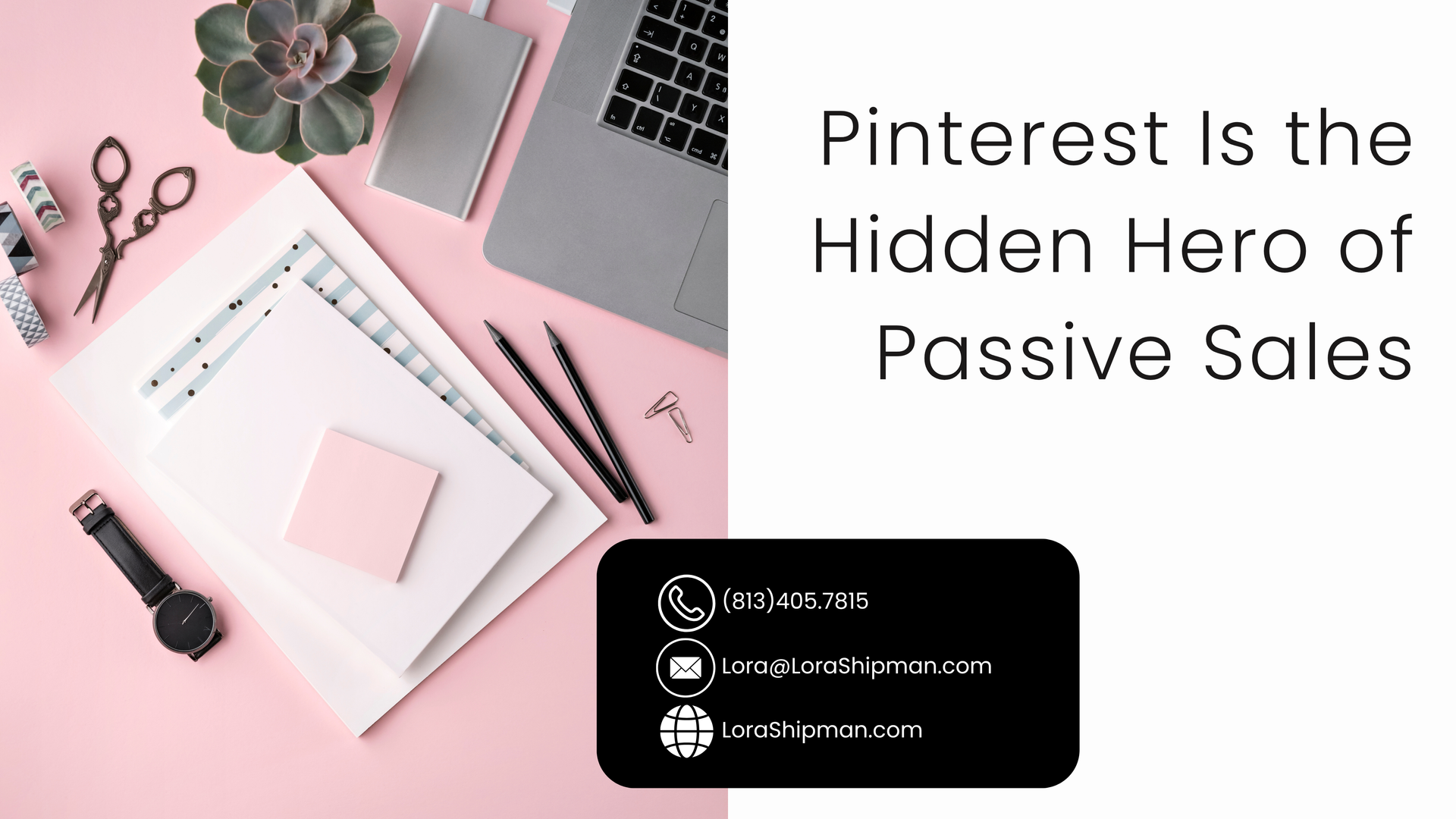Pinterest is the most underrated traffic and sales drivers online

If you’re putting all your marketing energy into Instagram or TikTok, you might be missing one of the most underrated traffic and sales drivers online — Pinterest.
Unlike social media, where your content disappears within 48 hours, Pinterest acts more like a search engine that keeps working for you long after you hit post. It’s the quiet hero of long-term visibility — and it can turn your pins into passive sales while you sleep.
Here’s how to make Pinterest part of your content strategy without adding extra work.
Step 1: Shift Your Mindset From “Social” to “Search”
Pinterest isn’t about followers — it’s about
discoverability.
People go there to find solutions, inspiration, and how-tos. That means your content lives much longer than on other platforms.
A pin you create today can still drive traffic a year from now.
Every graphic or video becomes a mini billboard leading people back to your products, blog posts, or lead magnets.
Ask yourself: “What is my audience searching for right before they need my offer?”
That question will guide your pin strategy.
Step 2: Create Keyword-Rich Pins
Pinterest runs on
keywords, so think like your audience.
If you sell social media tools, your keywords might include:
• social media tips for small business
• how to plan content
• Instagram growth hacks
• batching ideas for entrepreneurs
Use these in your pin titles, descriptions, and even image file names.
Example: Instead of naming a pin “image1.png,” name it “content-batching-tips-for-small-business.png.”
It’s a small step with a big impact on search visibility.
Step 3: Design Scroll-Stopping Visuals
You don’t need to be a designer — you just need clarity and contrast.
Create clean, tall
graphics (1000x1500px) in Canva with:
• Bold titles that state the benefit (“Plan a Month of Posts in One Hour”)
• Brand colors for consistency
• Simple imagery or mockups related to your topic
Keep text large enough to read on mobile. And remember: less is more.
You can even repurpose your Instagram carousels into pins by adjusting the size. One design = multiple platforms.
Step 4: Link Every Pin to a Purpose
Every pin should lead somewhere intentional — your blog, freebie, or product page.
Don’t just pin pretty images; pin paths to action.
Examples:
• A “Batch Your Content Like a Boss” pin linking to your blog about batching
• A “5 Canva Hacks” pin linking to your tutorial post
Each pin becomes a breadcrumb trail back to your offers.
Step 5: Batch and Schedule With Metricool
You don’t need to be in Pinterest daily. Once a month, create and schedule your pins using Metricool.
Upload your designs, add descriptions, select your boards, and let
Metricool automate the posting.
Scheduling in bulk keeps your profile active without constant effort.
Step 6: Track What’s Working
Once your pins have been live for a few weeks, check your analytics.
Look for:
• Saves (a sign your content resonates)
• Clicks (a sign your pin drives action)
• Boards with strong engagement
Double down on those topics and visuals. The goal is to create more of what’s working, not reinvent every time.
Pinterest is the long game that pays off month after month.
While other platforms rely on constant visibility, Pinterest quietly builds your traffic, grows your email list, and increases your sales in the background.
When you treat it like part of your content ecosystem — not an extra chore — it becomes one of your easiest, most reliable marketing tools.
Create it once. Pin it strategically. Let it work for you.
Want to turn your content into a traffic and sales machine? Grab
The Content Rescue Kit — your step-by-step guide to plan, organize, and schedule content that works across every platform (Pinterest included). Download it here: [Link].